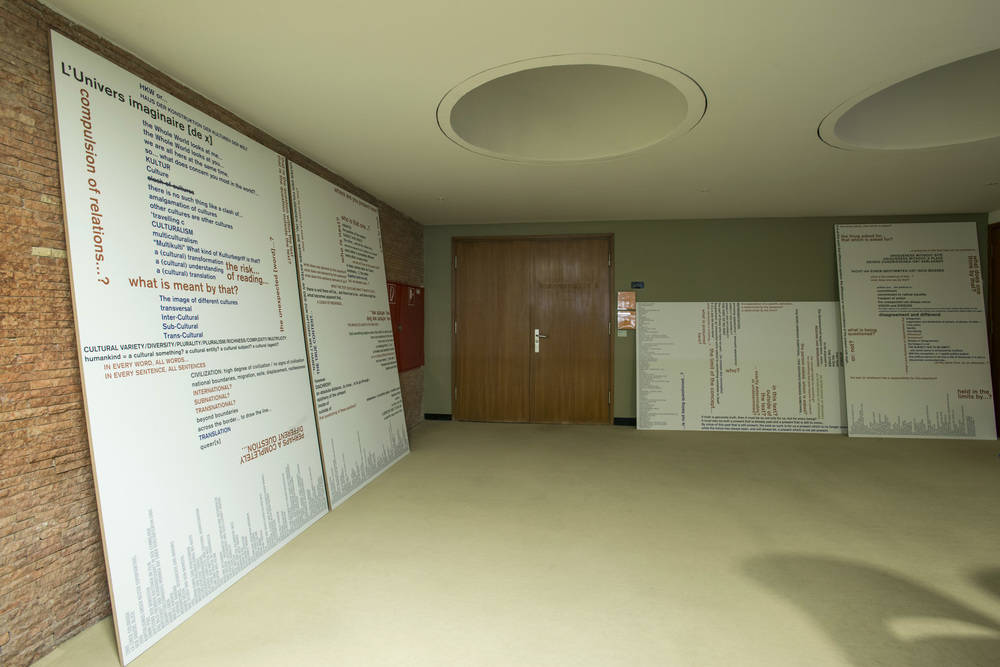The textual work by
Thomas Locher addresses the connections between the language, institutional history, and relation to politics of HKW. As a symbol of the Cold War, HKW underwent considerable changes over the course of the last two decades. Built as “a propaganda building aimed at the Soviets” 1 and thus symbolizing the moral superiority of western democracy, HKW shifted its self-understanding after it opened its doors in 1989 from the dominant edict of politics to a prevailing turn to culture, acknowledging the growing role played by culture in international relations. Nonetheless HKW continued addressing political agendas after the German state was newly constituted in 1989. Thus the institution took on “Cultural Development Politics” focusing on the “Third World” during the 1990s and later global relations, introduced by postcolonial discourses. Locher’s text-image constructions and installations analyze the changing ideological purpose and programmatic concepts of HKW during the last two decades, revealing its consequences with respect to the view of the “Other” and the self and on the use of terms, rhetoric, and aspects of common parlance.
1 Steffen de Rudder, The architect Hugh Stubbins: fiftiesʼ American
modernism in Berlin (Berlin: Jovis Verlag, 2007), p. 66.
